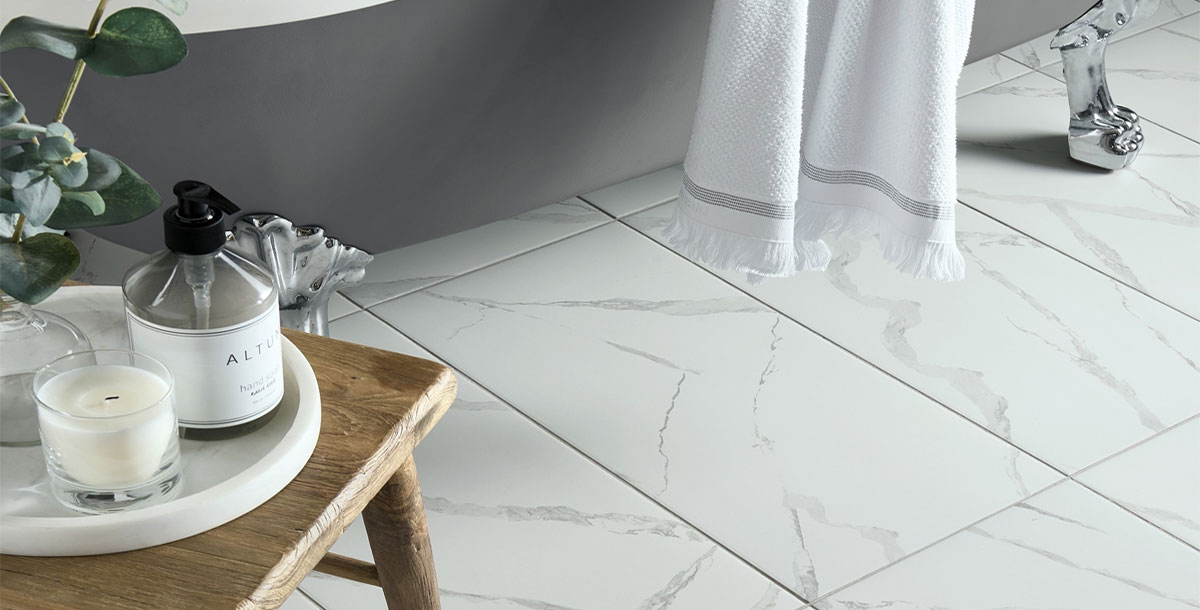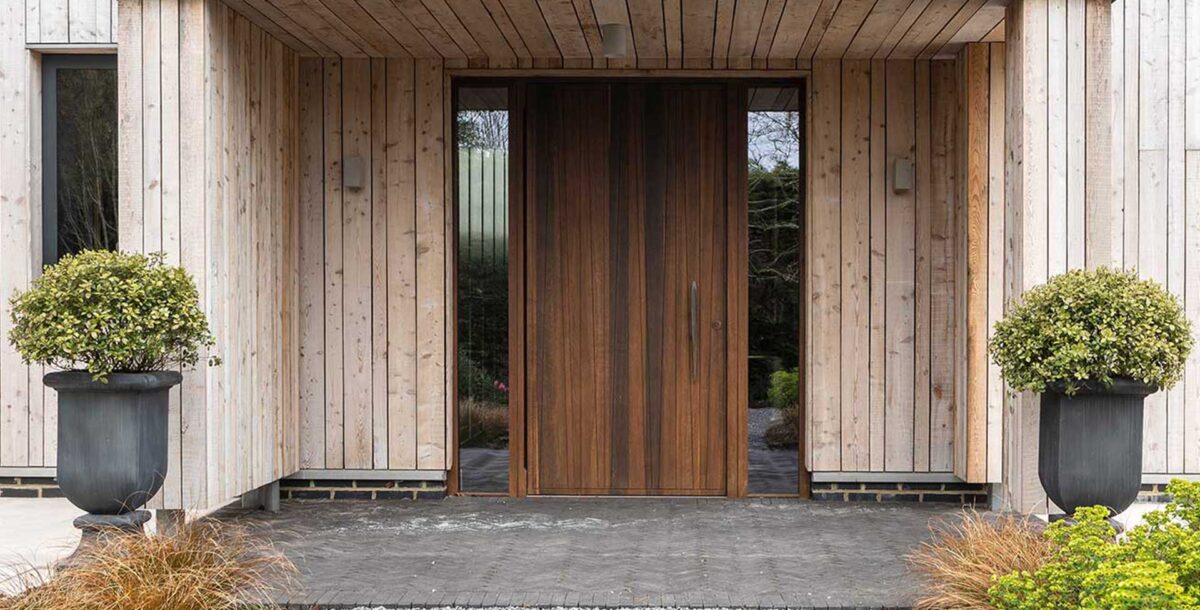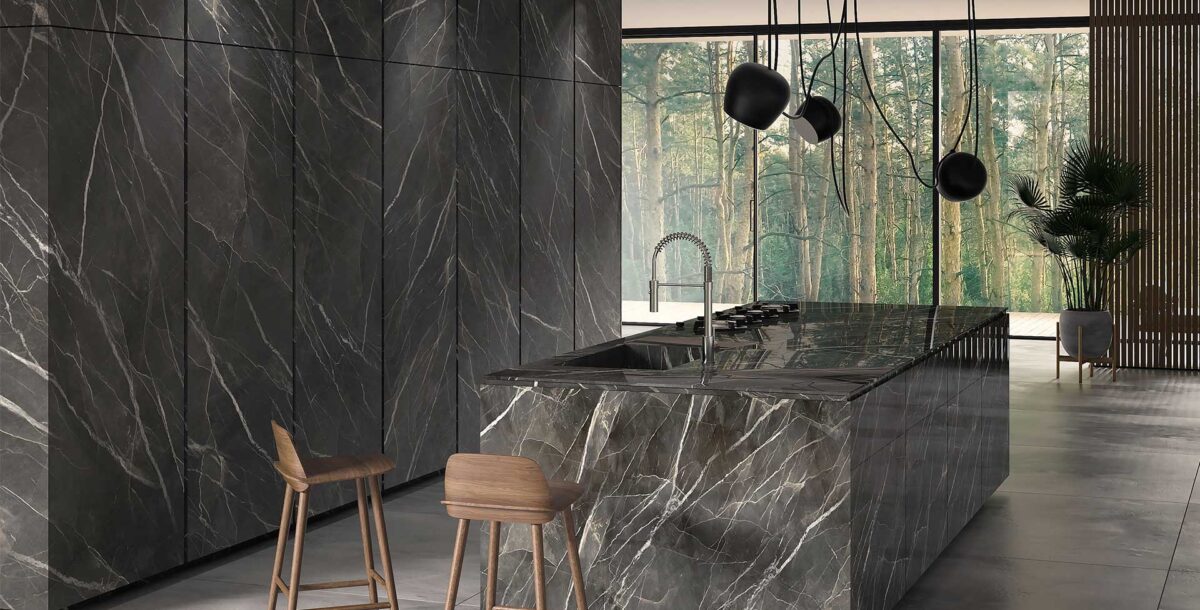The complete guide to underfloor heating – should you get a wet or dry system?
How it works, the different options available and what costs are involved
Once used predominantly in kitchens and bathrooms, underfloor heating (UFH) is now an option for heating larger spaces, and even the whole house. As well as being pleasant underfoot, it also emits radiant heat, making it an energy efficient way to heat the home that works well with renewables.
“One of the biggest attractions is that it’s completely invisible, with no need for radiators taking up your wall space,” says Stuart Wisbey of the Stone & Ceramic Warehouse. “It is also particularly advantageous in spaces such as wet rooms, as floor moisture is quickly evaporated.”
Although there are many systems on the market, they all fall into one of two basic types – electric or water-based. An electric system, usually in the form of very thin wire or matting, works independently from central heating. On the other hand, a water-based system is connected to the main central-heating source and works by circulating warm water through plastic pipes installed under the floor.
Water-based systems are an ideal whole-house solution. Electric systems offer easy retro-fitting for individual rooms and are cheaper to install, but cost more to run.
Electric underfloor heating (dry system)
Also known as a dry system, electric underfloor heating is installed directly under a floor covering and its low-profile has little impact on floor levels. It’s ideal for single-room installations, where a sub-level is already set. Loose wire systems allow for awkwardly shaped rooms, whereas self-adhesive mats offer the ultimate easy-fit solution. And it’s not restricted to use under floors; an electric underfloor heating system can be installed on a wall and seating in a shower and wet room.
All electrical connections must be made and tested by a qualified electrician in order to comply with building regulations. Because the heating element sits directly under the flooring, circuits are easily accessible if they need to be repaired. A disadvantage of this type of underfloor heating is that it can be more expensive to run than a wet system, and the Energy Saving Trust doesn’t recommend it for use in large areas.
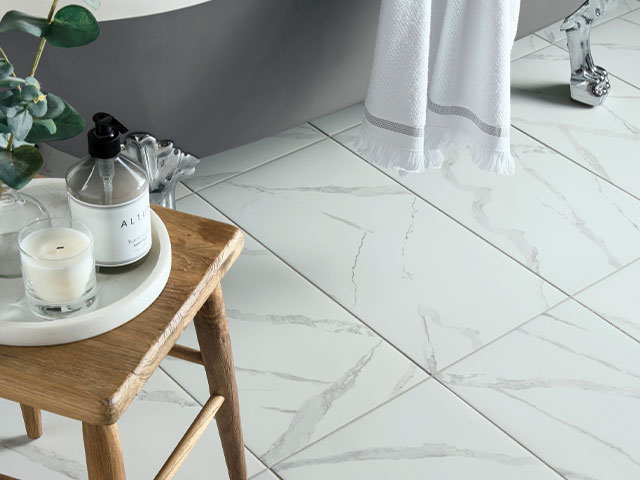
Warmup Promat UFH with pressure sensitive adhesive and 1.8mm wires and Stacara ceramic tiles from Topps Tiles
Water-based underfloor heating (wet system)
A water-based underfloor system consists of a run of flexible hoses under the floor that carry hot water from your central heating system. As water from a heating system is generally very hot, there’s a mixer valve that reduces the temperature of the water so that you don’t get burnt walking around. Typically, an underfloor system should be set to a water temperature between 35°C and 45°C.
In addition, as there’s a lot of pipework, underfloor heating systems will have a pump to help push the water around. This pump can operate a single zone or multiple underfloor heating zones through an underfloor heating manifold. Simply put, a manifold is a hub for underfloor heating, letting you isolate and control individual zones.
Generally used in new-builds or extensions, wet underfloor heating is best suited to new floor constructions, which can be designed to hold the pipework and be adequately insulated. It’s ideal for an open-plan space or whole-house system, and can be fitted to a solar water-heating system.
A wet system can take longer to warm-up than other heating, but it also takes longer to cool down. A heating engineer or specialist will complete the water-based underfloor heating installation, which can run to thousands of pounds if it’s a whole-property system. But problems tend to be extremely rare, and pipes are designed and tested to have a 50-year life expectancy. Just be aware that retrofit can be difficult, and floors may have to be elevated to allow for pipework.
Water-based underfloor heating systems are more expensive to install but cheaper to run in the long-term than electric systems.
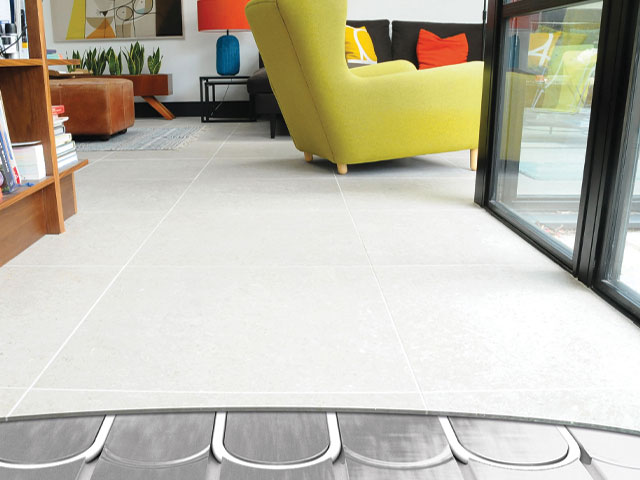
Wundatherm UFH system with aluminium and polystyrene grooved boards for 16mm pipes from Wunda
How much does underfloor heating cost to install?
Generally, underfloor heating offers more than enough warmth to be used as a single form of heating, but its capabilities will be dictated by factors such as the floor covering and building insulation levels. Your installer will be able to offer advice about looking into your home’s thermal performance, so you can calculate the amount of heat you need to generate. All installations should be tested before the floor finish is laid.
The price of underfloor heating depends on the system you choose, the size of the space you wish to heat, the desired heat output, how often your run the heating and how well-insulated your home is. But according to checkatrade.com, for installation you can expect to pay around £60-£85 for electric underfloor heating during a renovation (£50-£75 for a new build), and £135-£185 for water-based underfloor heating during a renovation (£120-£135 for a new build).
The Warmup website also offers a useful guide to system, installation and running costs.
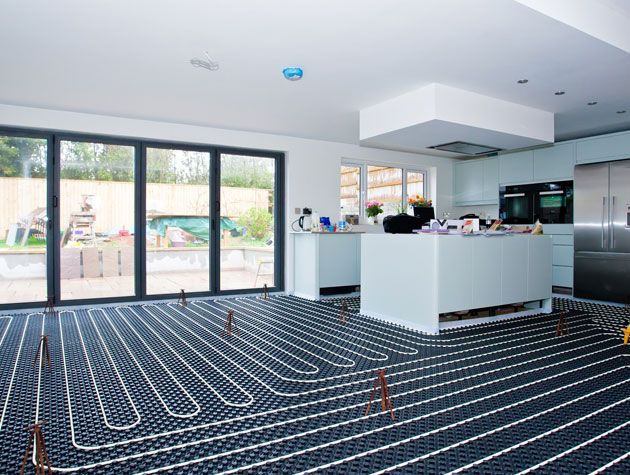
Nu-Heat underfloor heating installation in progress – UFH tube is fitted into the castellated panel according to the system design
Choosing your flooring
Underfloor heating is compatible with a wide range of floor coverings, including carpet, providing the combined thermal resistance of the carpet and underlay is less than 2.5 tog. The thicker the product, the longer it will take to heat up and cool down.
“The material needs to be expertly installed,” says Jason Cherrington of Lapicida. “You have to wait for the screed to dry properly and then the UFH needs to be run to test it, as thermal movement can cause certain types to crack. Laying the floor tiles is relatively quick and shouldn’t take more than a day per 10sqm for a proficient tiler.”
Engineered boards are also a popular option among renovators and self-builders because they are less likely to warp. ‘It is one of the best materials for use with UFH,’ says Russell Calder at Havwoods. ‘Natural, warm to the touch and a good conductor of heat, the majority of engineered boards are perfectly suited for use with UFH. This is particularly true of those with a solid-oak lamella – the top layer of an engineered plank.’
Underfloor heating is more efficient and cost-effective if fitted above insulation, as it reduces downward heat loss. Ensure the rest of your house is well insulated, too.
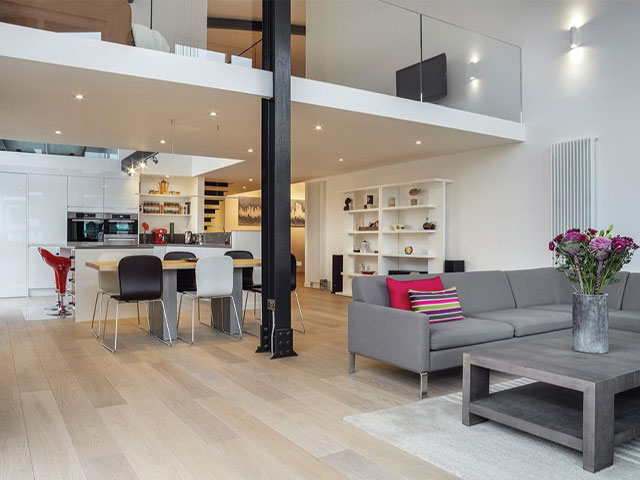
Fendi 13 HW921 engineered wood flooring in white UV oiled European oak from Havwoods
Does underfloor heating take a long time to heat up?
As heat has to heat a floor’s surface, underfloor heating isn’t as responsive as radiators or other forms of heating, such as infrared heating. This can mean that it takes a room longer to warm up when using underfloor heating. The type of flooring you have will affect this. For example, stone, porcelain, slate and ceramic tiles are compatible with underfloor heating, and have good thermal conductivity to provide a quality heat output; thicker stone floors will take longer to warm up.
The flip side is that underfloor heating systems cool down slower than regular radiators, continuing to release heat long after the heating system has been turned off. That can make temperature control a little harder to get used to. For example, if you start cooking in a kitchen, the combination of that and underfloor heating can make the room very warm, and there’s no quick way to cool the floor down. It takes a little while to get used to underfloor heating and how to use it.
How much does underfloor heating cost to run?
There are conflicting figures about the eco benefits and savings for underfloor heating, depending on the type of piping laid and the insulation used. An electric system can be more expensive, but a programmable timer – such as the 6iE Smart WiFi Thermostat by Warmup – can be used to optimise performance. Plus, as it runs independently from central heating, you can warm a specified area without having to heat the whole house.
Wet underfloor heating is generally cheaper to run, as it ties in with your main heating system. There are people who say it’s best to leave it on permanently at a low temperature, to avoid long warm-up periods, but heating any room that’s not in use is a waste of energy. That’s particularly true with wet systems run off a traditional boiler. Here, the boiler will typically heat water to a high point (around 65°C or higher), but the mixer valve on underfloor heating reduces that temperature, which can be inefficient. Using underfloor heating with a heat pump is more efficient, as the input water is at a lower temperature to start with.
Is underfloor heating compatible with a heat pump?
Yes, and as noted above, it’s the ideal combination. Heat pumps output water at lower temperatures, which is ideal for underfloor heating. That makes for a more efficient use of power, not to mention that you’re reducing your carbon output. Overall, heat pumps can be cheaper to run than gas boilers, and you won’t see any difference in your underfloor heating’s performance.
Can you run underfloor heating with smart thermostats?
Yes, you can. For wet systems, any smart thermostat will turn the boiler on and off on demand, controlling your underfloor heating. If you want zoned control, then there are some smart heating systems, such as Honeywell Evohome, that have smart underfloor manifolds (or single control if you have just one zone) that let you control the temperature of each zone independently.
Adding smart controls to underfloor heating can make much sense, as you get more control over each zone. And, smart thermostats often have additional features, such as learning how long your home takes to heat up, allowing them to turn off the heating to an underfloor zone early to avoid overshooting the target temperature.
For dry underfloor heating, you need a smart thermostat that can control an electric circuit. This is possible with some systems, but you may prefer to stick with the controls that ship with the system.

